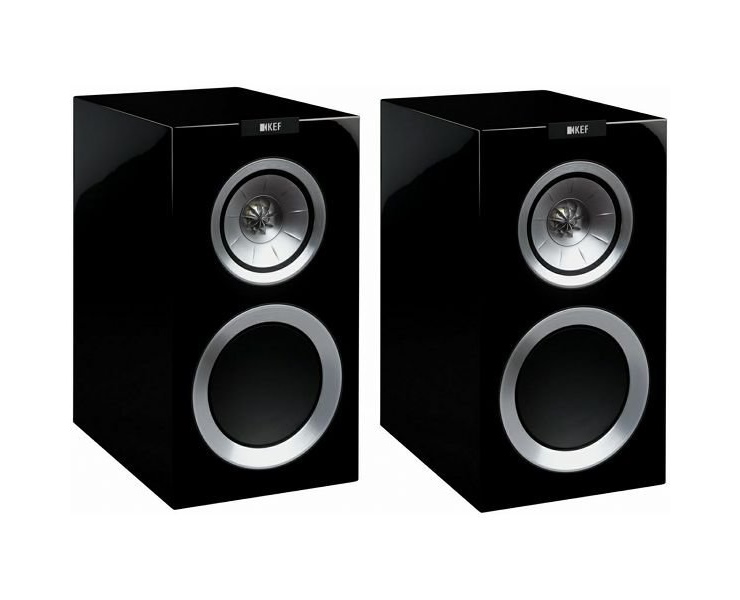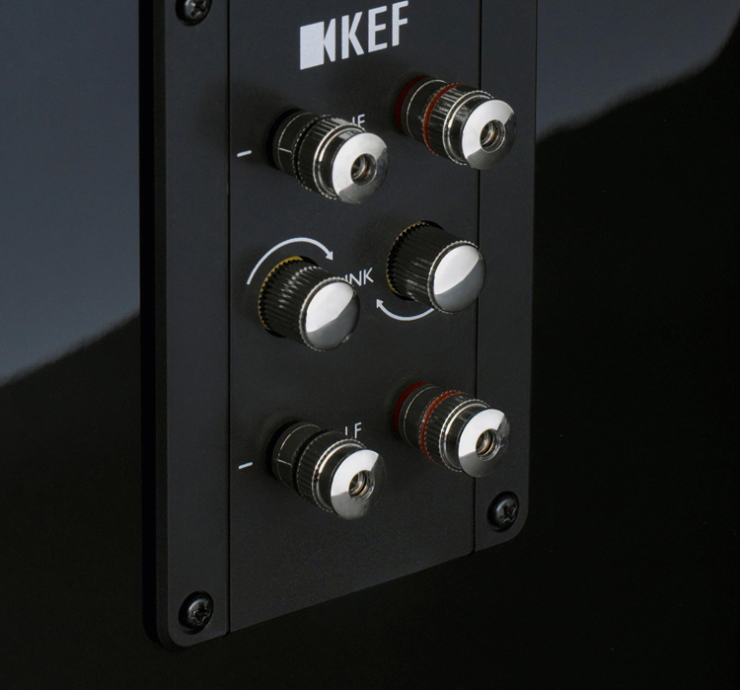KEF R300 Review
KEF R300 Test
The British company KEF, like its biggest competitors, has always had excellent products in the middle segment. Due to the great prices, more attention has always been paid to the C and Q series, but the R series actually offers top quality for not so much money. Today we do KEF R300 review.
Disclaimer: If you purchase through links on our site, we may earn an affiliate commission. Read More
The R Series consists of as many as ten models. The last member of this family is the R50 model which is used in Dolby Atmos systems. There are three more stand-alone models on offer, the R900, R700 and R500, two compact models, the R300 and R100, as well as two center speakers, the R200c and R600c. The series is completed by a single effect model R800ds and a subwoofer R400b. They all use the same speaker units, so the description of the technologies used applies to all models in the series. It will be recalled that a few years ago, KEF celebrated its fiftieth anniversary by launching the LS50 speaker model, which actually represents the successor to the famous LS 3/5a model. This KEF bookshelf speakers have gained excellent ratings and reviews and is often mentioned in discussion forums as a competitor to the R300. We didn’t test these two speakers at the same time, so we couldn’t do the A-B test, but we know both models well as we reviewed the LS50 model too, and we can make some conclusions.
The tested R300 represents the larger of the two bookshelf models and is topologically three-way with a bass-reflex opening on the back. By the way, the entire series is made in four colors: walnut and rosewood veneer, as well as piano black and white gloss varnish. The speakers look very elegant, with slightly beveled edges, and there is a KEF logo on the top of the box. You will notice that the cover is mounted with a magnet, it is not raised from the surface and it perfectly protects the speaker units. Also, we must say that the magnetic system is excellently made because it does not allow the mask to take arbitrary positions, but the tolerance in that sense is very small.
- The R300 features a 5 inch Uni-Q driver array, which consists of both...
- The R300 bookshelf speaker also features a 6.5 inch low-frequency driver...
- Surrounding the Uni-Q driver array is our new mid-range Z-flex surround,...
- The R300 affords you the option to use either a single amplifier as your...
- At just over 1 foot tall and 8 inches wide, the R300 is the perfect...
We said that the R300 is a three-way, bookshelf speaker, which is a real rarity. The secret lies in the already well-known Uni-Q units – the technology for which KEF is world-famous. It installs its Uni-Q units in the famous and affordable Blade, all the way down to the Q series. Among conventional speakers, only the cheapest C-Series do not have the privilege of possessing Uni-Q technology.
These speakers have a pronounced natural sound, while the vocals are quite authentic.
Technology & Build
When we remove the mask from the speakers, something very interesting is revealed to us. The midrange driver unit’s membrane is made of aluminum and magnesium composites, where aluminum provides the necessary lightness, while magnesium enhances strength. This membrane has transverse lines, ie folds, nine of them, which reduce the resonance. This is the famous KEF Uni Q driver unit. The tweeter is made of the same material, which can be seen by looking. It has “sound waveguides” on it, whose arrangement resembles a tangerine waveguide. Their task is to control the dispersion characteristics of sound waves. Placing the dome tweeter in the center of the midrange driver unit is actually the ideal solution, which is closest to the idea of a one-point sound source. Bass unit is 165 millimeters in diameter and is quite solid thanks to the aluminum, which is coated with some satin-like material. The R100 model has the same Uni-Q driver, but it lacks a bass unit, so our tested R300 is certainly more complete in sound. And briefly, about the specifications – the R300 has a nominal impedance of eight ohms and a sensitivity of 88 decibels, which makes it one of the speakers with solid efficiency. The recommended power of the amplifier starts at 25 watts, which we believe is quite enough in smaller living rooms.
On the back, we notice very high-quality dual speaker terminals, as well as two small screws. Do you know how on some bi-wire models, manufacturers supply metal plates to bypass the speaker terminals when they are connected by a single connection? These metal plates are often of dubious quality and need to be replaced with a shorter cable, but they can also be lost. On the R series, KEF has solved this issue far more elegantly, with screws that can connect or disconnect the speaker terminals on the crossover, depending on whether the user is planning a single or double connection. In the box, you will find two roller-shaped sponges used to close the bass reflex opening. We use these sponges in really rare situations, but we used them for the R300 model, we will also say why…
KEF R300 Sound Test
We have been listening to the KEF R300 for a very long time, so we are also used to its reproduction. These speakers have a pronounced naturalness, while the vocals are quite authentic. The treble is not overemphasized and does not protrude, while the bass segment is very sharp and strong. In one of the settings we were not in a situation to move the speakers away from the back wall a lot, so the sponges we put in the bass reflex openings helped us get a better definition. There is enough bass, even a shade too much, and that is exactly the segment where the LS50 and R100 cannot compete with the R300. Some will tell you that the LS50 sounds more pleasant or natural, but we don’t see any reason for that. With the R300 you get a more complete reproduction – precise, credible, and a bit daring. Second, the treble dispersion is really impressive thanks to the Uni-Q unit. Interestingly, KEF does not recommend rotating the R series model, but because of the Uni-Q unit, it advises that the speakers be placed in parallel in the room. We listened to that advice only after a long hearing and it seems to us that we got a little better results. If you decide to tilt the speakers towards the listening position, do not overdo it with large angles, our recommendation is not to exceed five degrees.
The reproduction of percussion and drums is especially noteworthy – the sound was without distortion, and it seemed to us that we were listening to speakers of a much larger size. Also, listen to songs with vocals and piano to feel the warmth provided by the R300. A great example is Hugh Laurie performing “Unchain My Heart” or a female vocalist.
√ Check The Price and Read Customer Reviews √
Verdict
KEF did a great job with the R series. We believe that the speakers from this series get the best ratio of quality and price. Unfortunately, the R300 breaks the psychological limit of $1000, but we are sure that the price is justified. At first glance, these speakers look nice, but not spectacular. However, when you take off the masks and see the speaker units, the situation changes drastically. The KEF logo on top of the box is just a cherry on the cake. Excellent build quality, fantastic reproduction, advanced technology, and perfect finishing are the things that are hard to beat in the R300. Criticism? Hardly anyone can find a flaw. We did not succeed in that.
The user manual is here: KEF R300 User Manual
Pros
- Uni-Q technology
- Quality of workmanship
- Mgnetic masks
- Speaker terminals
Cons
- Absolutely nothing
KEF R300 Specifications
- System type: 3-way
- Enclosure type: Bass-reflex
- Frequency response: ± 3dB 50 – 28000 Hz
- Nominal impedance: 8 Ohm
- Amplifier Requirements: 25 – 120 W
- Sensitivity (2.83V/1m): 88 dB
- Tweeter 25 mm (1 in.): vented aluminium dome
- Midrange 125 mm (5 in.): aluminum
- Woofer 165 mm (6.5 in.): aluminum
- Dimensions (H x W x D): 385 x 210 x 345 mm / 15.16 x 8.27 x 13.58 in.
- Weight :12 kg / 26.4 lbs.









